Art Sets.
Art of parts: collage and assemblage from the collection
Print this setBy Helen Campbell, Art Gallery of NSW
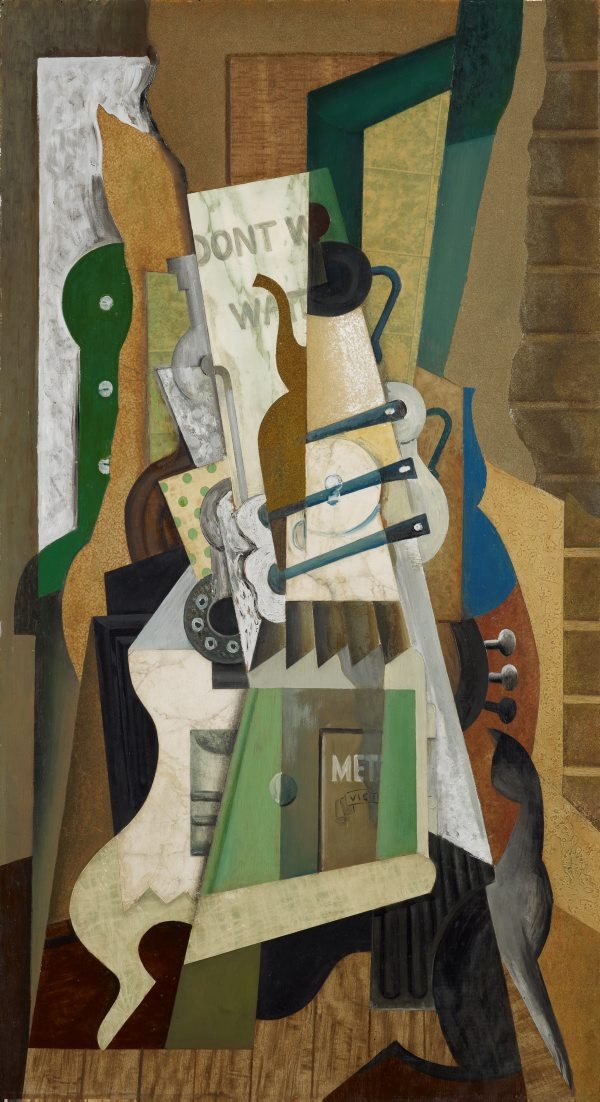
AGNSW collection Eric Wilson Abstract - the kitchen stove 1943
A kitchen stove is the ostensible subject of Abstract – the kitchen stove, but Eric Wilson applied this theme for its potential to explore purely abstract concerns. He reduced the various elements to a flat pattern and reassembled them in a manner akin to musical composition, repeating, varying and balancing motifs and devising rhythms.
Close inspection reveals fragments of printed and embossed wallpaper collage. These enhance appreciation of texture and depth but also convey the idea of the stove and its kitchen surroundings, rather than simply providing a visual replication of it. Wilson was a follower of cubism, which put a new emphasis on such an approach. He was influenced by the example of Georges Braque and Juan Gris, introducing collage elements to prompt a reconstruction of the subject through imaginary connections to the ‘real’ world.

AGNSW collection Colin Lanceley The Dry Salvages 1963-1964
Colin Lanceley’s triptych displays an extraordinary array of urban detritus, both domestic and industrial in origin. The impetus for this work came from his fascination in the histories that cling to such battered objects and their power to evoke memories and associations. He was strongly influenced by modernist poet TS Eliot’s collagist approach of juxtaposing disparate ideas to convey contemporary life.
The title of this work derived from the third of Eliot’s Four quartets, published in 1941. In this poem, Eliot’s imagery of river and sea evoked the passage of time and human culture through the flotsam and jetsam of the past. It was revelatory for Lanceley, showing how he might similarly recover some essential poetic essence from the chaos and waste of contemporary life in his work.

AGNSW collection Tom Arthur Ten fingers shape a bowl for shadows, in a few months we'll wonder what plates and knives are for 1976-1983
Tom Arthur created this work at a time of intense absorption in the poetry of Sylvia Plath, with its evocations of mortality and transience. The title was inspired by a line in her poem The stones, which had shown him the possibility of using any available materials to create a drawing.
Seeking the viewer’s imaginative engagement, Arthur selected items he had collected from various sources, adding them to the underdrawn elements of the room he was living in at the time. He chose fragments – a wooden ‘Christo’ figure, small animal bones, bits of wire and steel and other elements found and in some cases reconstituted or reconfigured – for their allusive, symbolic potential and their innate power to communicate directly with the viewer.
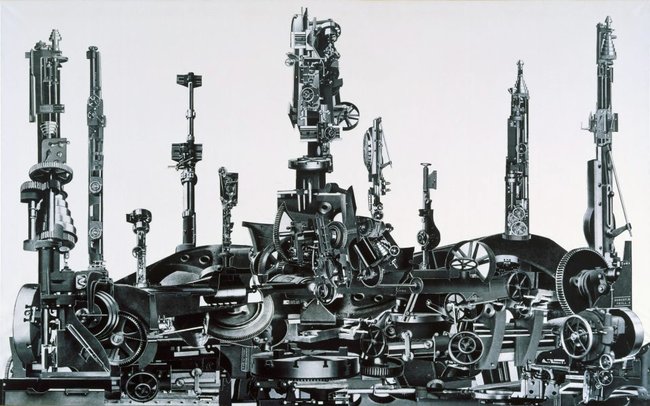
AGNSW collection Robert Klippel Philadelphia 1978-1979
Robert Klippel’s use of collage enabled him to create the large-scale work Philadelphia with relative ease. He commissioned photographer Robert Walker to make the photographic enlargements that it comprises from a 19th-century book of machinery illustrations. Klippel arranged and modified the cut-out photographs so skilfully that the whole appears seamlessly ordered, giving the deceptive impression of mechanically functional and logically composed entities.
Philadelphia reflects Klippel’s interest in exploring the relationship between mechanical and organic forms. A surreal metropolis whose cluster of mechanical ‘spires’ rise from a complex subterranean ‘engine room’, it creates an industrial parallel to the natural forces that generate mountains or trees out of the landscape. Klippel’s conception of this fantastical image and his reliance on chance in its selection, scaling and juxtaposition was influenced and guided by both surrealism and his concern for formal structure.

AGNSW collection James Gleeson The image of the king riven by a bolt of lightning, is revealed as a silo of spaghetti 1978
James Gleeson’s main interest as a devotee of surrealism was to open up the realm of the imagination, by expanding our conceptions of reality beyond the materially visible. He favoured collage for its ability to generate new, unfamiliar and unexpected forms, through chance and juxtaposition. Collecting photocopied images from books, magazines and newspapers, including illustrations of human and animal anatomy from medical texts or insect life under a microscope from science journals – he selected each element for its shape or texture.
This collage also incorporates frottage and decalcomania (rubbing and transfer techniques used by a number of surrealists, including Max Ernst) creating electrically charged visions of the bizarre and fantastical. It is from Gleeson’s most important series of collages of the late 1970s, the Locus Solus suite, which took its title from a surrealist novel by French author Raymond Roussel.

AGNSW collection Robert Klippel Drawing July 1960
Robert Klippel’s interest in machine parts began in London and Paris between 1947 and 1949, when he was exploring the language of forms, both man-made and organic. He began collecting machinery catalogues at that time, using them in collage from 1952 and later incorporating ready-made machine parts into his sculptures.

AGNSW collection Robert Klippel No 796 1989
Robert Klippel created this assemblage from wooden pattern-parts for machinery, collected during the early 1960s from a disused shipbuilding foundry in Balmain. The forms bear the trace of their former life as functional industrial objects, in surface gashes, colouring, numbers and letters.
Klippel was chiefly interested in their shapes. He saw these ready-made objects as a rich source of raw material akin to the ‘shape alphabet’ that he had developed decades earlier as a young artist, sourced from nature, machinery, the works of other artists and cultures, and under the microscope. Despite their mechanical origins, the carved wooden forms evoke a natural quality which inspired Klippel to create his ideal synthesis of organic and geometric form.

AGNSW collection Rose Nolan An orange constructed one 1993
Rose Nolan has been inspired by the work of geometric constructivists Kasimir Malevich and Vladimir Tatlin, and the idealism and revolutionary fervour of the early 20th-century avant-garde, since she visited Russia in 1985. An orange constructed one reflects that influence, with geometric vertical and horizontal overlapping elements. As the shape of a cross, the work also reflects Nolan’s Catholic upbringing. She has fused its symbolic power with the geometry of the modern age.
The improvised construction, humble materials and bright colour of An orange constructed one present a contradictory range of qualities from raw directness and urgency to humour or even pathos. The work has an air of dignity – monumentality even – that belies its humble materials and reflects Nolan’s interest in how the materials of her art may be used to attain a spiritual dimension.

AGNSW collection Tony Albert Headhunter 2007
Tony Albert contrasts the strength and dignity implied by the word ‘hunter’ with a debased view of Aboriginal people and culture as represented by the kitsch tourist souvenir-ware featuring ‘portrait’ heads.
Albert collected similar material as a boy and uses its familiarity to many Australians as a means of engaging serious thinking on racist discrimination against Aboriginal people. In this context, the word ‘hunter’ implies the Aboriginal hunter of pre-settlement Australia, the white colonial hunter of ‘Aborigines’ on the frontier and the artist himself as a collector of these wares. The white plastic ‘alien’ head on the letter ‘H’ is Tony Albert’s signature reference – intended as a symbol of cultural alienation and displacement by Aboriginal people within Australian society.
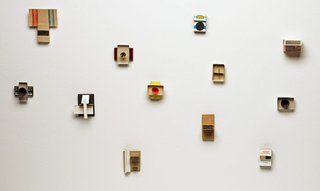
AGNSW collection Eugene Carchesio Matchbox constructions 1994-1995
Eugene Carchesio recycled old matchboxes to create these tiny constructions, rearranging and dismantling box-lids and bases, inserting small rolled paper cones and painting parts in brilliant colour or black and white.
In contrast to the ‘noise’ of contemporary life and frequent large scale of recent art, its diminutive form and modest materials are striking. Carchesio believes the function of art is to engage the spirit – to raise awareness and heighten sensitivity. These matchboxes are intended as metaphors for spent energy which he seeks to restore through the addition of tiny loudspeaker-like cones, inspired by the Italian futurist Luigi Russolo (1885–1947), who used the cone as a symbol for the transmission of energy.
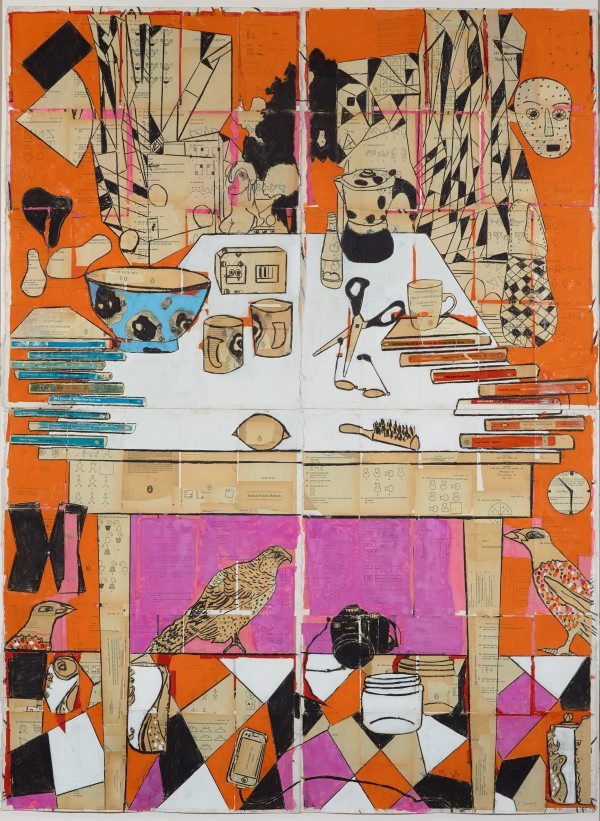
AGNSW collection Katherine Hattam The integrity of the personality 2008, 2014
Made from the painted pages of paperback books, Katherine Hattam’s collage presents a studio/kitchen table to which she has added charcoal drawings of familiar things from her domestic and artistic worlds.
On the surface, this work appears as a still-life image of domestic objects, but closer inspection reveals a work of richly allusive complexity and emotive power. Selecting aspects of the past that were important to her identity, Hattam collaged title spines and pages from key texts of second-wave feminism, psychology, education and fiction into the work. They reveal her interests during the 1970s – a formative period of her life when women were actively consciousness-raising to overcome sexist oppression and gain equal rights.
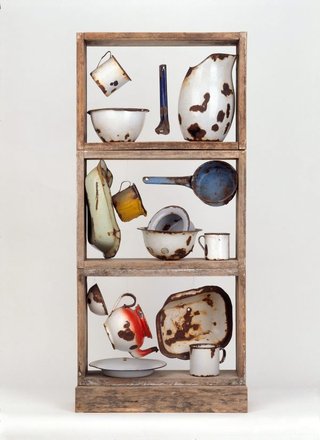
AGNSW collection Rosalie Gascoigne Enamel ware 1976
Rosalie Gascoigne scoured the dumps, abandoned settlements and countryside of the Canberra region to source the materials for her art, finding particular appeal in objects that bore the marks of age and weather.
In Enamel ware she arranged a variety of kitchenware into a composition of shapes that she found aesthetically pleasing. Finding beauty in the effects of rust, physical distortion and deterioration through use or weathering, she transformed these functional domestic pieces into a new abstract ‘harmony’ of forms with subtle accents of colour. While newly configured as a composition of geometry, these rust-patched wares with their misshapen forms retain their power to evoke another time and place.
Venus was the Roman goddess of love, embodying sexual desire and beauty in an idealised form and taken up by artists as a subject throughout history. Sourcing nudes from reproductions of famous paintings as well as from pre-Roman ‘Venus’ statuettes, Deborah Kelly has re-worked their conventions – seeking to raise awareness of how the female body may be represented and desire fulfilled in ways other than those determined by a patriarchal, heterosexual society.
In this work, a Venus de Milo figure clutches her centre of fertility, her power and virility restored via arms, luxuriant hair and eggs.
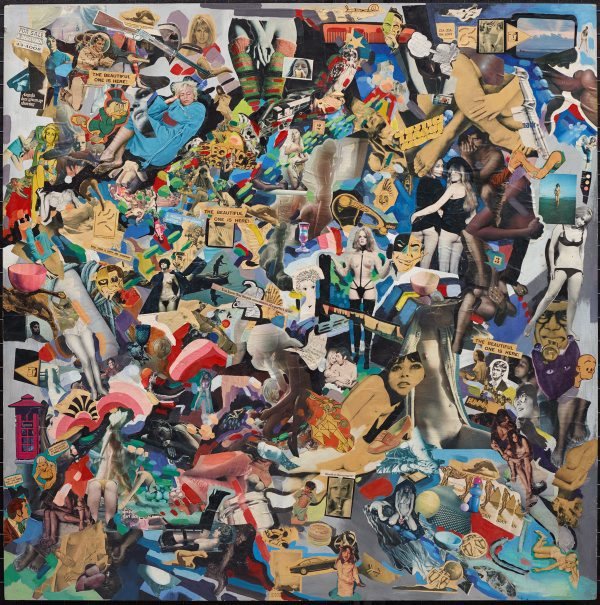
AGNSW collection Mike Brown The beautiful one is here 1969-1970
Mike Brown’s dense collage of nude women in sexually suggestive poses was sourced from magazines, comics, newspapers and other media of the day and reflects prevailing attitudes to women in Australian culture of the late 1960s.
Brown wanted his art to be made from everyday life and its materials . His choice of images for this collage acknowledged the existence of private sexual fantasy, the porn industry and sexually exploitative advertising. It also reflected his antagonism towards the elitism and conventions of ‘high’ art. Today it is more difficult to appreciate the relative shock value of this work at the time it was made, when the broader Australian society was deeply conservative. For those who welcomed the socially progressive 1960s, however, it represented a liberating celebration of sexual freedom coupled (from today's perspective) with a blindness to its sexism.

AGNSW collection Michael Johnson Two fold homage to a square 1973
Michael Johnson’s art has always focused on the exploration of colour, observing its power to change through placement and juxtaposition. This collage was made in connection with his experiments in minimal geometric abstraction during the 1960s and ’70s.
It explores the formal effect of a sheet of commercial black paper, placed to create geometric form on a base sheet. The colour of the base paper sheet provided an equivalent to the pure flat colour in his paintings of that time, while the folded geometric shape and its placement related to his shaped paintings and sculpture of the period.

AGNSW collection Madonna Staunton Untitled 1985
Madonna Staunton’s aim in this collage was simply to invite contemplation. Staunton likes to ‘bring to life’ disparate elements of what she terms ‘inert matter’, opening up new possibilities for them. The work can be interpreted as a visual poem, embodying the notion that enlightenment may be found in the commonplace. This idea, coupled with her careful selection and placement of elements, reflects Staunton’s longstanding interest in Oriental philosophy, particularly Zen Buddhism, whose teachings emphasise the importance of capturing the essence of the aesthetic object by the simplest of means.
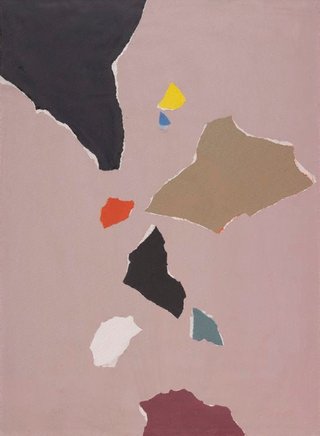
AGNSW collection David Aspden Coast III 1978
David Aspden created his own materials for collage by mixing paint colours and applying them to sheets of white paper. This collage consists of torn pieces of thin painted paper pasted to another painted base sheet. A distinctive feature of Aspden's approach is the white torn edge of each pasted shape, creating a transitional space between foreground and background that makes the shapes appear either to ‘float’ or ‘sink’.
The three-dimensional qualities of these collaged shapes impart a degree of movement or quasi-musical animation to the surface of the work. Coast III may be enjoyed for both this ‘musicality’ and its sensitive calibration of colour and shape relationships. At another level, Aspden’s title highlights the imaginative associations of the image for him with the passage of boats outside his harbourside studio.
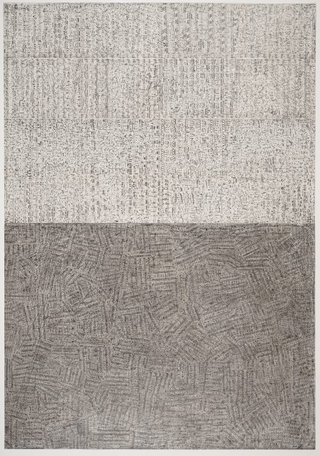
AGNSW collection Allan Mitelman Untitled 2006
From a distance this collage appears as a dense pattern with contrasting light and dark sections, but closer inspection reveals the myriad notes of musical scores, cut from old Christian Life hymnals. In the upper half of the work, Mitelman orientated several bands of symmetrically -arranged scores at right angles to the viewer, creating a relatively static field of marks. In contrast the lower part is an asymmetrical arrangement of score-strips, activating the surface with movement and rhythm. Mitelman’s compositional contrast of activity with calm in the upper and lower parts of this collage, has a fascinating concordance with musical composition.
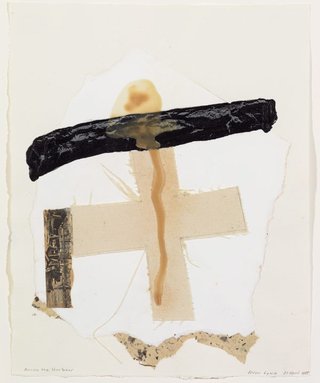
AGNSW collection Elwyn Lynn Across the Harbour 1988
Australia’s foremost texture painter, Elwyn Lynn began incorporating extraneous materials into his paintings and works on paper following a visit to Europe in 1958, when he saw the work of Spanish ‘matter’ painters such as Antoni Tàpies.
Lynn subsequently asserted, ‘All my work grows out of collage.’ He was interested in how ‘the stuff of the environment’ could enrich his work. These various fragments contribute shape and texture to essentially abstract compositions. But they also add suggestive power, triggering imaginative speculation regarding their origins and associations.
WORKS IN DISPLAY CABINET
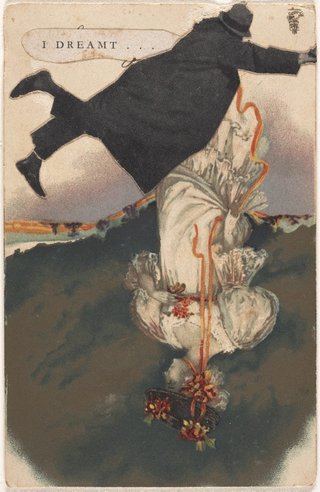
AGNSW collection Carl Plate 'I dreamt' 1945
This collage is from a series of ‘love poems’, sent by Carl Plate to his wife before and after their marriage. He created them by cutting out and pasting magazine and newspaper elements onto postcards and other card to create witty, strange and surreal associations.
Plate had lived in London during the emergence of surrealism, visiting the International Surrealist Exhibition in 1936. These collages reflect the influence of that time, when artists were encouraged to tap into a subconscious world of imaginings beyond reason.
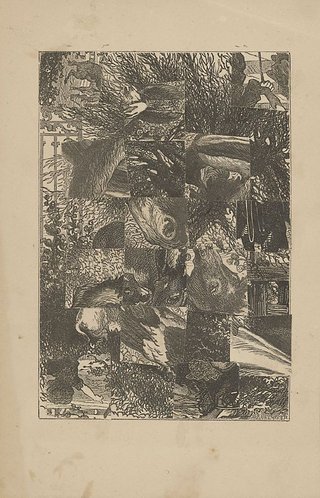
AGNSW collection Sidney Nolan Untitled circa 1940
Sidney Nolan created this collage using 19th-century wood-engraved illustrations, changing their orientation and juxtaposing disparate images to defy any narrative interpretation. The stark tonal contrast of black and white lends them emotive force and a surreal, dreamlike quality. Nolan’s unorthodox approach sought to disorient the senses in order to convey an intense emotional reality, inspired particularly by French poet Arthur Rimbaud (1854–91).
Fascinated by the multi-functional potential of collage, Nolan combined its sculptural capacity with the shapes and tones of his source materials to create an abstract composition. His patchwork quilt-like structure suggests movement or fracture and forces our perception to slip between surface and illusory depth.

AGNSW collection Arthur McIntyre Life study III 1985
This collage juxtaposes medical illustrations of human anatomy with photographic images of a baby, a young ‘business’ man and an older ‘judge’ figure. Delicate butterfly and daisy stem illustrations contrast with theatrical patches of dense black pastel. The work is from a larger group of collaged drawings and paintings centred on the dualities of the human condition: birth and death, light and dark, survival and decay.
Arthur McIntyre stated that collage became particularly important to him when he was living in Paris during 1975. Surrounded by the complex layered fabric of that historic city with first-hand exposure to the works of the dadaists, French surrealists and contemporary collagists, he was prompted to experiment with this technique for its expressive potential.
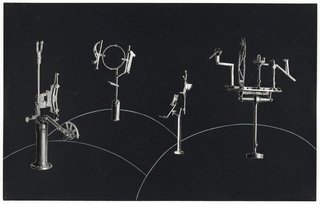
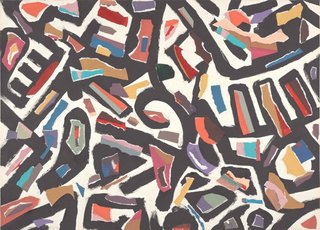

![AGNSW collection Carl Plate 48 ['one pair gants'] 1948](/media/thumbnails/collection_images/2/229.2009%23%23S.jpg.320x640_q85.jpg)
![AGNSW collection Carl Plate 39 [pink snail] 1945](/media/thumbnails/collection_images/2/226.2009%23%23S.jpg.320x640_q85.jpg)